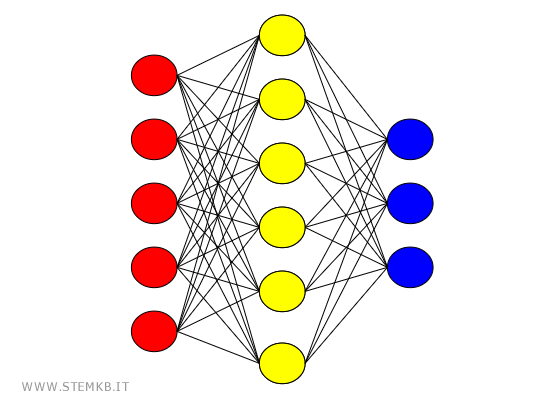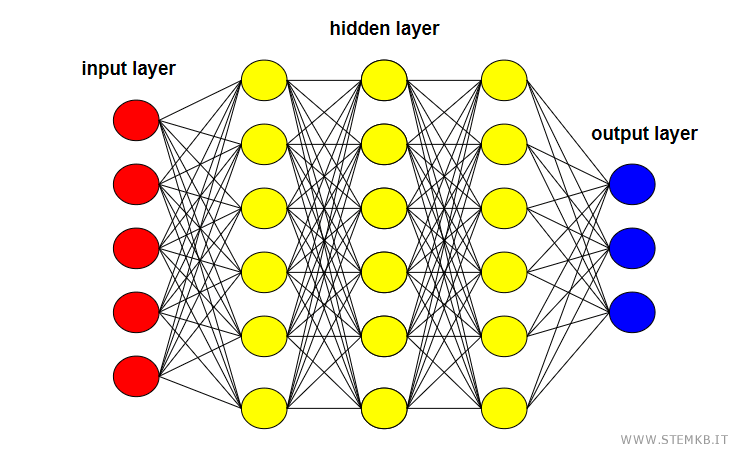Neural Networks
Neural Networks (NN), a cornerstone in the field of computational mathematics, consist of intricately interconnected artificial neurons, mirroring the principles of biological neural behavior.

Structured in multiple layers, each neural network comprises:
- Input Layer: The initial layer, responsible for receiving data input through its neurons.
- Hidden Layers: Situated between the input and output layers, these can vary in number. A single hidden layer characterizes a basic neural network, while multiple layers indicate a deep learning neural network.
- Output Layer: This final layer processes and outputs the data, culminating the network's computational journey.
Every layer in the network refines the data it receives, contributing to the subsequent layer's input.

The quantity and complexity of these intermediate layers significantly influence the network's computational depth and capacity.
Neural networks are instrumental in various domains, notably in automated learning and machine learning, with a specific emphasis on deep learning applications.
A trailblazer in this domain, the Perceptron, stands as one of the pioneering machine learning algorithms derived from neural network theory.
What is a Perceptron? A Perceptron is a type of supervised learning algorithm in the field of machine learning, primarily used for binary classification, which involves distinguishing between two distinct categories. It's one of the simplest models of an artificial neural network, functioning by receiving inputs, weighting them with assigned weights, and generating an output based on an activation function. Its historical significance lies in the fact that it was one of the first models used to simulate the decision-making process in a single neural cell (neuron).
Diverse in nature, neural networks encompass various forms, including Recurrent Neural Networks (RNNs - LSM, LSTM, GRU), Multilayer Perceptrons (MLPs), Convolutional Neural Networks (CNNs), Deep Convolutional Neural Networks (DCNNs), Seq2seq autoencoders, and Generative Adversarial Networks (GANs).
Network Classifications
At their core, neural networks are primarily categorized into CNNs and RNNs:
- CNN (Convolutional Neural Network): These are forward-feeding, non-recurrent networks, devoid of internal cycles, predominantly utilized in object recognition scenarios.
- RNN (Recurrent Neural Network): Representing a sophisticated class of artificial neural networks, RNNs uniquely utilize the output from one layer as input for preceding layers, thereby establishing intricate feedback loops and cycles.
Other types of neural networks include the following:
- Multi-Layer Perceptrons (MLPs)
Within the landscape of neural networks, a notable category is Multi-Layer Perceptrons (MLPs). These deep neural network structures are a cornerstone in machine learning, designed to emulate the human brain's approach to processing information. An MLP is characterized by its layered composition, which includes input, hidden, and output layers. This intricate arrangement of neurons is adept at learning from data. The networks utilize sophisticated methods like backpropagation and gradient descent to develop the ability to predict outcomes or classify data. Their adaptability makes them ideal for a broad spectrum of machine learning applications, ranging from nuanced classification tasks to complex regression analysis.

